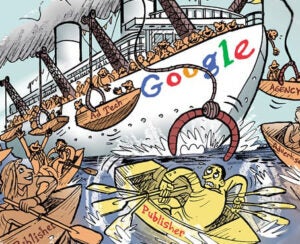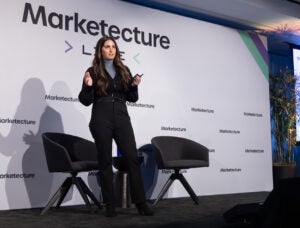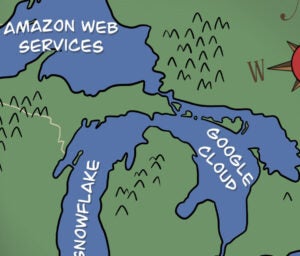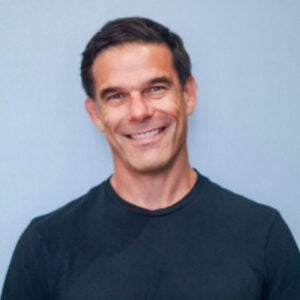 Google spent the year branding YouTube as the de facto video partner for brand advertisers.
Google spent the year branding YouTube as the de facto video partner for brand advertisers.
2014 was certainly active for Google’s video properties. Its ads and commerce chief, Susan Wojcicki, took the reins at YouTube as senior vice president, Google packaged the top 5% performing YouTube videos for brand buys in a program called Google Preferred and it rolled out Partner Select, a premium video marketplace.
Both premium video inventory and programmatic technology are working for YouTube. In comScore’s November rankings for desktop online video, Google Sites continued to top the list with 162.2 million unique video viewers.
But if 2014 was the year Google invested in creator content and brand advertiser tools, 2015 could be the year YouTube works to defend its position. Competitors from Facebook to new web video service Vessel are pushing to attract new video content and YouTube stars, respectively.
AdExchanger spoke with Tara Walpert Levy, managing director of global ads marketing at Google and YouTube, the former president of linear TV supply-side platform Visible World, about the road ahead.
AdExchanger: Do YouTube creators identify most with millennials?
TARA WALPERT LEVY: For millennials, [digital video and YouTube] are where viewership and interaction happens. [Our creators’] revenue between 2012 and 2013 increased by nearly 60% looking at a year-on-year comparison. The revenue on mobile tripled. Almost 50% of the viewership on YouTube in the US is now coming from mobile.
How are these viewing patterns impacting partner strategy?
Millennials are two times less distracted when they’re watching on that screen vs. when they’re watching on TV. The combination of those things are creating pretty significant monetization opportunities for platforms, but more importantly, the partners.
A lot of brands are partnering directly with these creators and the authenticity of their communities is what’s driving results for their brand. That’s creating this virtuous circle where the brand wants to invest.
But I wouldn’t think this was necessarily a millennial story. YouTube is No. 1 in reach not just for 18-34, but also 18-49. That’s one of the other things that excites me as we look toward 2015. Everyone is starting to behave more and more like a millennial in terms of how they consume content and that just broadens the opportunities that are available.
Facebook answered this question onstage at the TV Of Tomorrow Show. What is a YouTube impression worth to marketers?
One of the biggest metrics [for TV has] always been the GRP. While having the advantage of being a common currency, it’s also one of the big limitations because GRPs aren’t a measure of results. They’re a measure of budget. One of the advantages online video offers is that more brands are taking advantage of tools like Brand Lift, which helps advertisers measure in real time what the impact of their campaigns are on brand recall and other things they care about.
What other success metrics are you seeing with YouTube?
They don’t just want to see that they had a higher level of engagement on an online platform or on YouTube, but also the ability to do something about it in the campaign, which has always been one of the limits of the [GRP] approach. By the time you get the data, it works in hindsight, but it’s actually not that useful for what you might want to do going forward because you’ve got a completely different campaign target and objective.
How is Brand Lift altering that?
We’re seeing advertisers, literally mid-campaign, adjust their target, their creative, their distribution strategy by creator, based on the metrics that are coming back. MasterCard was one of the big users of this Brand Lift tool and they literally changed their creative in the middle of a campaign and doubled their brand recall. We’ve run over 6,000 surveys in the last few months and one of the things we’re interested in for 2015 is extending these capabilities into sales lift in a scalable way. At the end of the day, that’s the holy grail – to know how many cases we shipped.
Snack foods CPG Mondelez International has partnered closely with Google on YouTube commitments. What constitutes a commitment?
We’ve shared some of the commitments around the offers we put into market this year around the newfront, like Google Preferred, and some of the deeper collaborations with creators I was referencing prior, which are hard to access on a real-time basis. We’re seeing more traction with advertisers both with programmatic and also in some of the more unique and customized experiences, which is where a lot of brands’ time and attention goes. Those are the hooks that drive their campaigns and they build scale out around them.
What’s next for Google Preferred?
The overall traction has been great. Helping advertisers simplify their focus and access on YouTube particularly with our top creators and with a model they’re used to is compelling. It started here in the US and did very well, so we rolled it out internationally and we sold out a lot of the key categories and topics, which proves the model works. Our real focus is how to scale that next year and create more inventory marketers can take advantage of and expand on some of the engagement types that were most popular so we can best match what we offer and what the market’s demanding.
Wearing your ad tech hat for a second, what are your thoughts on some of the large video DSPs (many of which hook in to AdX) hooking in to linear TV supply?
I spent a lot of time in TV and it’s still really early. There’s not a lot of inventory available. The connections between offline and online are going to blur and we’re building toward that. It will be some time before we see significant movement of the traditional TV base … which is why we started by making investments in programs like Partner Select, which take advantage of … online properties and traditional, TV-like customers to bring that kind of premium video inventory into market in a way we think will have greater scale more rapidly.
How are you evaluating over-the-top and connected TV alliances? Apple TV, for instance, just updated its YouTube app.
We have the same pros and cons as anyone. You want to be where the consumer is. There are lot of great devices in the marketplace and the challenge is trying to manage multiple systems and execute against it. What’s most important is to have as much seamlessness as you can in terms of execution into different environments. One of the reasons why so many brands come to us with DoubleClick, and other pieces of the web, is the same thing we look for there – how can we be in as many places as the consumer in as an efficient a way as possible?













